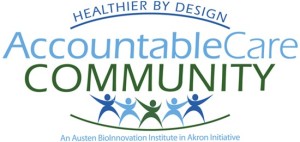 ?ACOs most assuredly will not?deliver the disruptive innovation that the U.S. health-care system urgently needs,? wrote Clay Christensen, godfather of disruptive innovation, et. al., in an op-ed in the Wall Street Journal of February18, 2013.
?ACOs most assuredly will not?deliver the disruptive innovation that the U.S. health-care system urgently needs,? wrote Clay Christensen, godfather of disruptive innovation, et. al., in an op-ed in the Wall Street Journal of February18, 2013.
In the opinion piece, Christensen and colleagues make the argument that Accountable Care Organizations (ACOs) as initially conceived won?t address several key underlying forces that keep the U.S. health care industry in stasis:
- Physicians? behavior will have to change to drive cost-reduction. Clinicians will need ?re-education,? the authors say, adopting evidence-based medicine and operating in lower-cost milieus.
- Patients? behavior will have to change. This requires patient engagement, adherence to treatment protocols that doctors prescribe based on evidence-based medicine (see previous bullet).
- The cost structure of health care delivery in the U.S. must ratchet down. As Uwe Reinhardt, pioneering health economist at Princeton, has written in Health Affairs, ?It?s the Prices, Stupid,? when it comes to health care costs in America. Any doubters of this should read TIME Magazine?s piece on the Bitter Pill of U.S. health care, published last week.
What to do? The authors argue for moving care to lower-cost settings, changing regulation and payment to allow clinicians (doctors and nurse practitioners, among others) to perform duties up to their full licensed capabilities (vs. referring to more expensive specialists), and leverage communications platforms to deliver more care in the community.
Health Populi?s Hot Points: ?What Christensen and friends are talking about is making Accountable Care Organizations act more like Accountable Care Communities. With this nuance toward ?community,? we embrace more of the patient-consumer?s broader local health ecosystem ? beyond health ?care,? and including pharmacies, schools, grocery stores, and other venues where ?health? and wellness are bolstered.
For example, pharmacies bolster medication therapy management which helps patients avoid readmissions to hospital and manage chronic conditions. Pharmacies are also low-cost, convenient channels for getting flu shots and vaccines to consumers. Grocery stores, like Safeway?s expanding wellness program, are morphing into health destinations. Schools for many kids are already de facto medical homes, but not recognized (or funded) as such. Most employers are adopting value-based benefits, incorporating artfully designed wellness programs and worksite clinics that do more than traditional occupational medicine.
To fulfill the promise of the accountable care community, a communications and technology infrastructure must be in place. This means adopting open information standards (such as the continuity of care record) and mobile health tools that enable care outside of iron-bound providers. If the information follows the patient, then continuity of care is ensured and health providers can better anticipate patient needs well before more expensive, complicated medical challenges emerge in the doctor?s office.
Source: http://healthpopuli.com/2013/02/25/the-accountable-care-community-opportunity/
day light savings time peter paul and mary edgar rice burroughs dallas clark litter marinol flight attendant
No comments:
Post a Comment
Note: Only a member of this blog may post a comment.